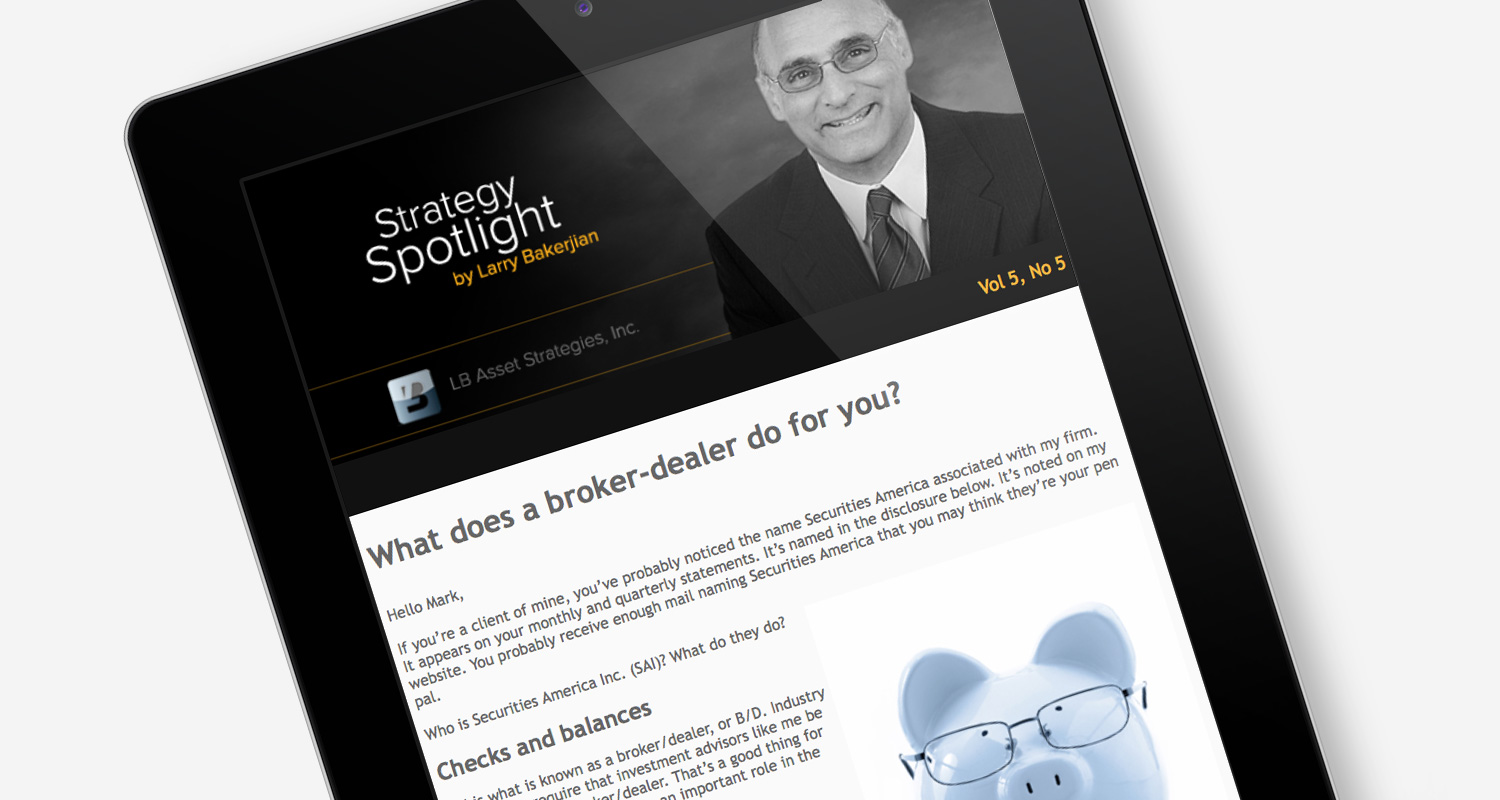
Image trend: Letterbox
November 1, 2015

About 65% of advisers consider their firm’s website their most successful marketing activity, according to the InvestmentNews 2014 Financial Performance Study of Advisory Firms.
A website can be so much more than a landing page linked to search engines and social media sites.
If your website doesn’t measure up, prospects will be encouraged to move on, perhaps to a competitor. So, how can a wealth manager make his or her firm’s web presence better for prospects and existing clients?
Examine your website along the following 3 lines …
Website visitors tend to scan text rather than read it. This occurs until they find the information they’re seeking. So, online content should be brief. You can add drill-down commentary, but doing so works best in the form of a video, a slideshow or a downloadable PDF.
Site navigation needs to be straightforward and intuitive. Review your navigation menus. Think from user’s standpoint how easy, or difficult, it is to move throughout the website. Prioritize information. Anticipate what people are seeking. Ask a few users for feedback on your site and make sure that the content most frequently sought by them is within a click away of finding.
Ensure that the layout, typefaces and type sizes are consistent across the site. Give white space high priority. Websites should be easily digestible to encourage users to read the information.
Include animation or sound only if it is the best way to tell your story or an aspect of your services.
Avoid using imagery and design elements that are merely decorative. Be willing to invest in quality imagery. Free stock imagery tends to make the rounds and appear in many places on the Web. You can distinguish yourself by using quality artwork — even if it costs extra.
Good design can make a firm stand out form the pack and can even set the tone the firm conveys. Get professional help in this area if you can afford it.
Write clearly. This builds trust and keeps the user engaged. Short sentences are best. Action-oriented sentences are motivating, unlike sentences that use the past tense.
Avoid long paragraphs and run-on sentences. Web users no longer read long articles of text. When formatting pages, try to keep block text as close to 100 words as possible. Exceptions can be made for important information. Be judicious and remember that lengthy information pushes other items down the page.
At SJ, we say don’t be afraid of “sales-y” prose — standard adversity copy. But avoid being aggressive and self-promotional. By self-promotional, we mean being self-serving, rather than providing information the user needs or thinking of questions the user has and addressing them. Self-promotional copy tends to be viewed with skepticism.
Same with negative comparisons. Instead of saying how your firm is better than others, state the qualities that distinguish your firm. A positive approach to writing is appealing to readers.
The writing style should give the impression of thoughtfulness. To maintain a serious professional and academic image avoid using exclamation points. Use a single space after punctuation that ends a sentence. Avoid excessive use of adjectives and typographic flourishes.
Avoid linking “click here” in imperative text. Add the link to the descriptive text — download “Our Paper.” Users know they have to click to get places and download things.
Be judicious in creating duplicate information. If information already lives somewhere on site, link there rather than repeat information. Repeating information creates clutter, complicates updates and creates potential version control problems.
A website can be so much more than a landing page linked to search engines and social media sites. It can create a valuable impression about your firm — and even encourage existing clients to share the site with others. It can give prospects a sense of the organization’s legitimacy and trustworthiness.